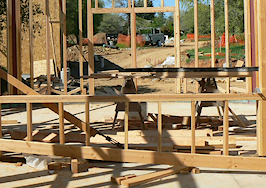This past April, I moderated a panel on Opportunity Zones (OZ) at the accounting firm Citrin Cooperman‘s offices in midtown Manhattan. The handpicked panel included CPAs Michael Gershon and Patrick Daly, tax attorney Matthew Rappaport, and commercial financing expert Stuart Gelb.
Their explanation of the program is succinct — the Qualified Opportunity Zone program was a part of the Tax Cuts and Jobs Act and is intended to unlock the potential $3 trillion of capital gains for investment in certain low income communities nationwide.
The program allows the taxpayer to defer the federal capital gains tax if it is invested within 180 into a Qualified Opportunity Fund (QOF).
More importantly, it allows for the permanent exclusion of capital gains derived from the later sale of the QOF investment provided that it is held for at least 10 years.
It might sound cut and dry, but over the months, I have heard erroneous interpretations of the program, this morning being the latest example.
I was invited by Columbia University to speak to a group of entrepreneurs about how they should think of real estate as their businesses continue to expand.
Over the course of the event, I spoke privately with a contractor who specifically wants to build his office in an opportunity zone, and I realized it was time to inform potential investors of the top misconceptions in a broader setting.
Based on the panel discussion this past April and reading the first round of regulations, this is how I interpret the program.
1. Myth: All sources of liquid assets can benefit from the OZ program
Reality: Only liquid assets from capital gains invested in a QOF will benefit from the tax benefits of the program. If it is not capital gains money, it is not a part of this tax benefit program.
2. Myth: You must hold onto the real estate for 10 years to benefit
Reality: Investors must keep their money in the fund for 10 years. However, the fund can buy and sell its real estate investments, as needed, during that time frame. The QOF must always remain in compliance with the program rules. It cannot sit on the money, uninvested.
3. Myth: The OZ program is better than a 1031 exchange
Reality: For real estate investors who currently own real estate in a deferred capital gains situation like a 1031 exchange, it does not make sense to pay any of the deferred capital gains tax through the OZ program as the capital gains deferment and rate is less advantageous than the current strategy of “defer till you die.”
Savvy real estate players take out a life insurance policy to help heirs pay the taxes due, and then they can decide if they wish to continue to hold such a portfolio.
Furthermore, an investor may not feel comfortable investing within an OZ.
On the other hand, real estate investors and developers with a track record of improving properties and who also work with outside funding can and should take advantage of the program and encourage their investors to put money into their QOF.
Their investors will absolutely enjoy the profitability that comes with the program.
Lastly, while not all the regulations are out yet, it is believed that QOFs will be able to use 1031 exchange during the 10-year period as they buy and sell real estate.
4. Myth: States are on the same page as the federal government in terms of improving the federally designated neighborhoods
Reality: Not all communities are welcoming to this program. For example, the Boulder City Council has (at least temporarily) suspended the acceptance of certain types of building permits, site review applications, etc.
Furthermore, there are communities that historically do not favor development. While developers can normally work their way through the red tape, to remain a QOF, a fund must substantially improve the real estate within a 2.5 year time period. The clock may literally run out if the QOF invests in the wrong community.
5. Myth: You must spend an equal amount on substantially improving the property as the original purchase price
Reality: QOFs must spend an equal amount on substantially improving the property as the cost of the building, not the combined cost of the building and the land. Therefore, it is important to have the value of each element assessed so, at a minimum, the developer spends the right amount of money to improve the site.
If, on the other hand, developers buy an empty parcel of land, the amount of money spent toward a reasonable, substantial development is not quantified.
Developers should expect an anti-abuse rule to prevent investors buying land only and speculating on its increase in value without adding any value.
I believe the program offers very interesting opportunities when completely understood. Here are the top five takeaways:
- The tax benefit only serves capital gains money
- Investors must keep their money in the fund for at least 10 years, even as the fund is allowed to buy and sell real estate within an OZ
- 1031 is still the better way to go for current real estate investors and developers, but the OZ program is a great way for these players to raise capital on new projects within an OZ
- Developers should make sure they are buying in a place that wants to improve and where the improvements can be completed within the requisite 2.5 years
- Only the cost of the building is relevant when considering how much additional investment is required for additional improvement.
With this as a base of knowledge, it is much easier to assess if the OZ program is for you or anyone you might know.
Other resources you could visit for more information are:
- US Department of theTreasury: Community Development Financial Institutions Fund
- IRS: Opportunity Zones Frequently Asked Questions
The full video from April’s panel can be found here.
My strongest is advice is to have an adviser by your side who understands the regulations and knows how to guide a fund through this new program. One wrong step, and a fund could lose its certification and, therefore, its tax break.
This column is based on the Opportunity Zones discussed at these links:
- New York State, Empire State Development page on Opportunity Zones
- US Department of the Treasury Community Development Financial Institutions Fund
- New York State’s list of opportunity zones. For Manhattan, see page 10
- Visual Map of Manhattan’s federal Opportunity Zones
How do you stay ahead in a changing market? Inman Connect Las Vegas — Featuring 250+ experts from across the industry sharing insight and tactics to navigate threat and seize opportunity in tomorrow’s real estate. Join over 4,000 top producers, brokers and industry leaders to network and discover what’s next, July 23-26 at the Aria Resort. Hurry! Tickets are going fast, register today!
Thinking of bringing your team? There are special onsite perks and discounts when you buy tickets together. Contact us to find out more.
Mihal Gartenberg is a licensed real estate salesperson with Warburg Realty in New York. Connect with her on LinkedIn.













